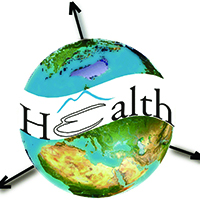Spatial analysis of the AIDS mortality rate among young people in a province of the Brazilian Amazon: An ecological study

All claims expressed in this article are solely those of the authors and do not necessarily represent those of their affiliated organizations, or those of the publisher, the editors and the reviewers. Any product that may be evaluated in this article or claim that may be made by its manufacturer is not guaranteed or endorsed by the publisher.
Authors
Worldwide, policies to combat human immunodeficiency virus (HIV) have led to a small decrease in the acquired immunodeficiency syndrome (AIDS) mortality rate among young people. For greater policy efficacy, it is necessary to determine the influence of social determinants of health (SDHs) in each territory. The objective of this study was to spatially analyse the AIDS mortality rate among young people in a province of the Brazilian Amazon and the spatial variability of the rate promoted by SDHs. All reports of AIDS deaths between 2007 and 2018 among young people living in the state of Pará were included in the study. The mortality rate was analysed using spatial distribution and autocorrelation, spatial scanning, and geographically weighted regression (GWR). During the study period, there were 1,372 deaths from AIDS among young people with a territorial expansion. The spatial autocorrelation showed two high-high clusters in the period from 2007 to 2010, one formed by municipalities in south-eastern Pará and one in the metropolitan region of Belém, with only the latter remaining between 2011 and 2018. This region showed a higher spatial risk for AIDS mortality and was the only cluster with spatiotemporal risk in the 2013-2018 period. Spatial variability was promoted by the i) the youth homicide rate, ii) the elementary school dropout rate and iii) the number of families registered in the Unified Registry for Social Programs (CadÚnico). This study provides support for the implementation of effective focal policies to combat HIV and reduce the mortality rate among young people in Pará.
How to Cite

This work is licensed under a Creative Commons Attribution-NonCommercial 4.0 International License.
PAGEPress has chosen to apply the Creative Commons Attribution NonCommercial 4.0 International License (CC BY-NC 4.0) to all manuscripts to be published.













